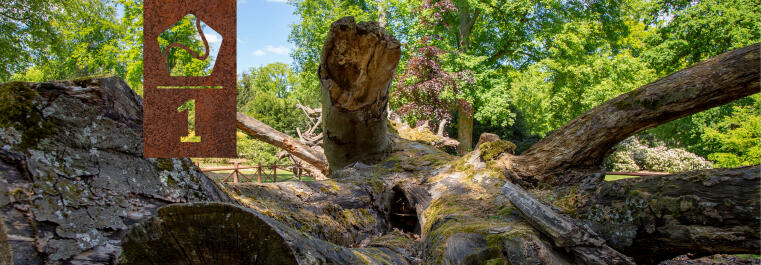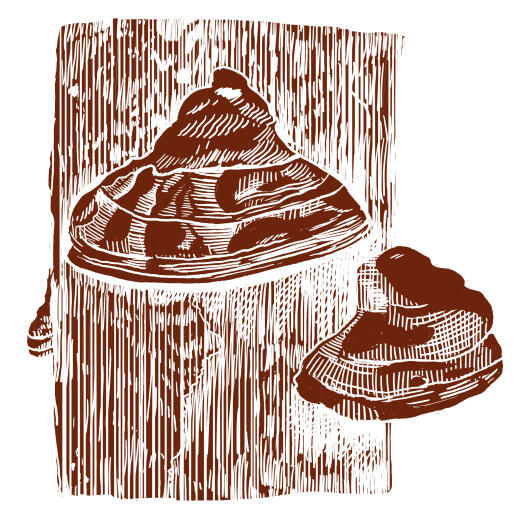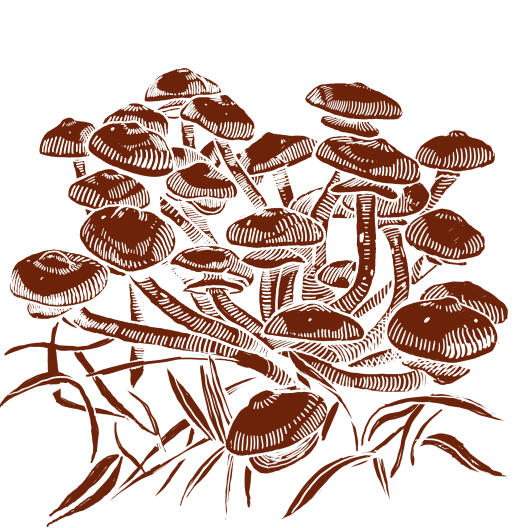

THE COPPER BEECH – A TRUE VETERAN TREE
Welcome to my stop! I was once a copper beech, and I’m a real veteran of a tree. I lived for about 220 years, and I was already standing here at the time of Napoleon. For 15 years I was cared for while I was dying – until I had to be cut down for safety reasons. The University has planted a new copper beech on the spot where I used to be. Have a look at it – it stands at the end of my trunk. This is life’s natural cycle: old things die, new ones are born.
I’ve been lying here since 2015 and can now decay. But I’m also making an important contribution to biodiversity in the garden here – even if it doesn’t look like it at first sight. And how does that work? As dead wood I provide an important habitat for lots of animals, plants and mushrooms.
Mushrooms are nature's ecosystem engineers!
As you can see, mushrooms come in many different shapes and sizes. The part of a mushroom that you can see above the ground is called the fruiting body. But the largest part of the mushroom is a network below the surface of the earth. Mushrooms, bacteria and lichens cause the wood to decay over a period of years, making it useful for other forms of life, such as insects. The humus formed provides fertile soil for countless plants.



WHAT'S THE ANSWER?
1. Can you guess from its name what people used the tinder fungus for in earlier times?
2. What’s the biggest living thing in the world?
3. Do you know which of the three mushrooms is edible?
SOLVING:
1. Exactly – these mushrooms were actually highly sought after for making fire. That’s where the saying “It burns like tinder!” comes from.
2. It’s the giant armillaria in a forest in Oregon, USA – known locally as the “humongous fungus”. It covers an area of 3.4 square miles in the earth, which is the equivalent of about 1,200 football pitches. It has a total weight of about 600 tonnes, which is as heavy as three blue whales. It is estimated to be about 2,400 years old.
3. Young fruiting bodies of the armillaria are edible when cooked. It is also used for medicinal purposes in natural medicine, as well as in traditional Chinese and Japanese medicine.

